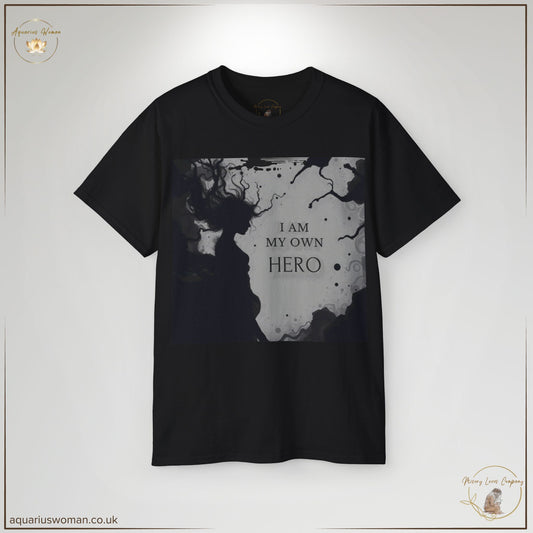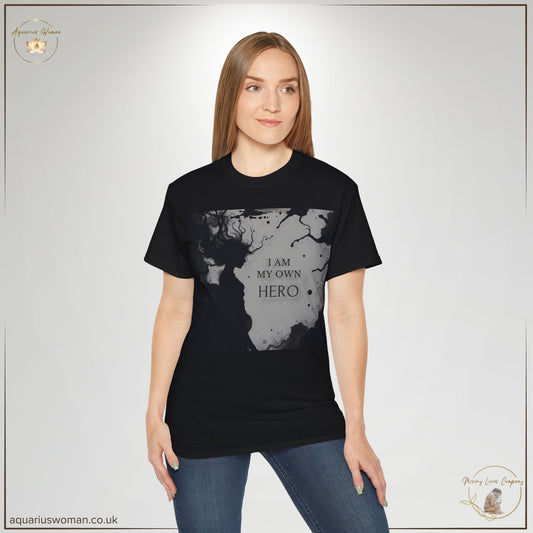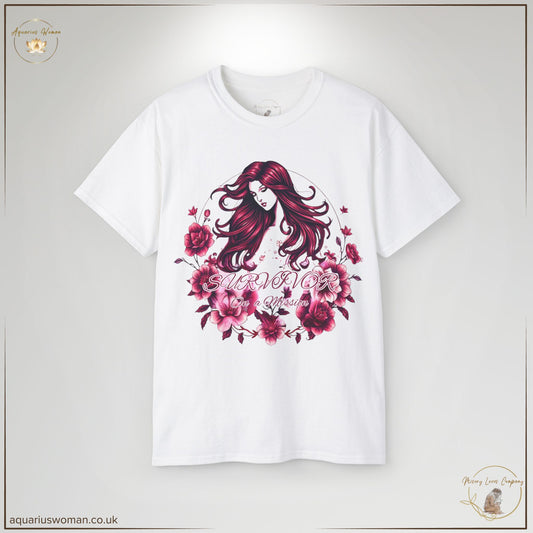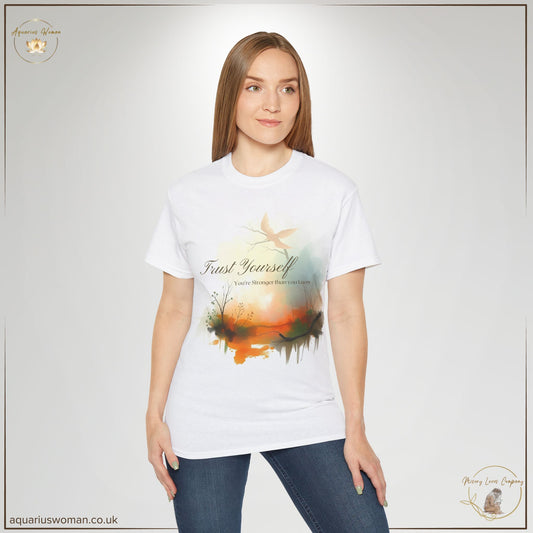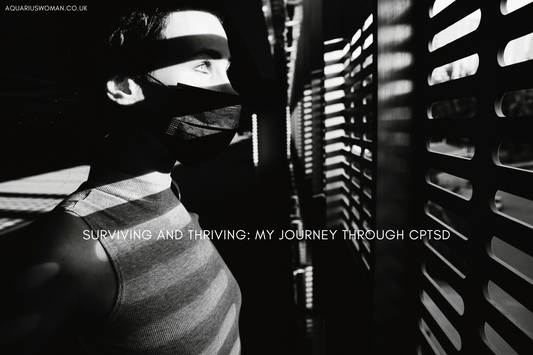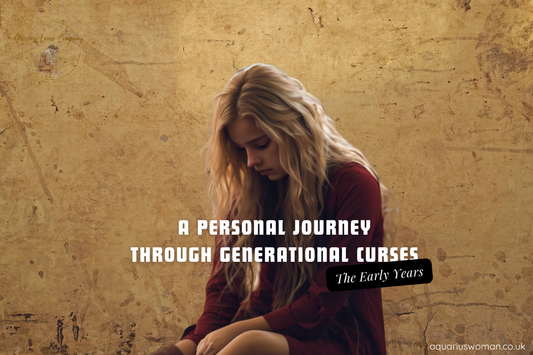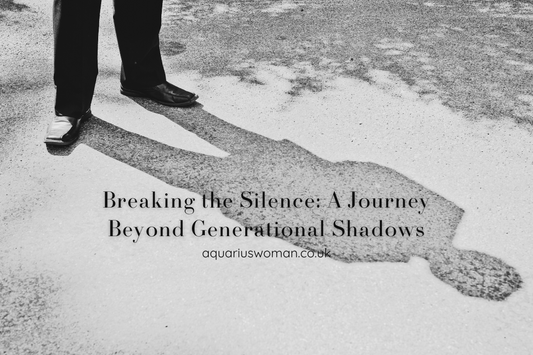Understanding CPTSD: The Impact of Prolonged Trauma
Complex Post-Traumatic Stress Disorder (CPTSD) is more than a mental health diagnosis; it is a lived experience of ongoing, profound suffering. It often develops after a person has endured long-term, repeated trauma, especially when that trauma involves emotional, psychological, or physical abuse. Unlike PTSD, which is usually triggered by a singular traumatic event, CPTSD grows from the relentless strain of trauma that doesn’t seem to end, making the victim feel trapped, powerless, and, in many cases, utterly alone.
When the abuse is psychological, the wounds can be invisible to others. Manipulation, control and fear are the abuser’s tools, leaving no bruises but inflicting deep, lasting scars on the mind. Victims of psychological abuse live with chronic stress, a diminished sense of self-worth, and a constant, simmering isolation. The safety they once knew becomes a distant memory as the trauma rewires the brain’s ability to process emotions, leaving the victim hypervigilant, forever bracing for the next blow, even in moments of calm.
Symptoms of CPTSD can include:
- Reliving the trauma through flashbacks, nightmares, and intrusive thoughts.
- Emotional instability, where intense highs and lows can strike without warning.
- Negative self-perception, often feeling worthless or blaming oneself for the abuse.
- Difficulties in maintaining relationships, as the trauma erodes trust.
- Physical manifestations of stress, such as chronic fatigue, headaches, digestive and neurological issues.
These symptoms don’t just exist in the mind; they take root in the body, disrupting daily life in ways that are often misunderstood or overlooked by those who haven’t experienced it first-hand. I’d like to share my personal journey through CPTSD, how this invisible force has shaped my life, my relationships, and my fight to reclaim control over my body and mind.
My Story: A Life Shaped by Trauma, Survival, and CPTSD
My journey with Complex PTSD (CPTSD) began with a devastating abandonment in childhood. At a time when I craved love and stability, the very people who were meant to protect me cast me aside, placing me into care. This early abandonment left a deep wound, filling me with feelings of worthlessness and a profound sense of loneliness. It created a vulnerability that would later be exploited, laying the foundation for two emotionally abusive relationships that further defined the trauma I would carry.
The first relationship seemed promising at first, a partnership rooted in shared dreams and ambitions. We built a successful business together and on the surface, life seemed full of potential. But beneath that facade, manipulation and emotional cruelty slowly crept in. I was belittled, attacked, and stripped of my dignity. When I finally found the courage to stand up for myself, I faced retaliation. My career, everything I had worked for, was obliterated as punishment for daring to demand respect. What I had spent years building was torn apart in a matter of moments, leaving me lost in the wreckage.
The second relationship took me to even darker depths. What began as emotional abuse escalated into physical violence, forcing me to stand up for my safety. But leaving him didn’t mean the nightmare ended. What followed was an insidious campaign of stalking, not just harassment but a deliberate, calculated invasion of every corner of my life. He hacked into my devices, bugged my home, and dissected my existence with a ruthless precision. Every conversation, every private moment, was turned against me.
This violation stripped away the last remnants of safety I had clung to. But the full extent of his cruelty emerged through a smear campaign, he crafted a grotesque 32-page document, a character assassination designed to destroy my reputation. He didn’t just stop there; he weaponized my most vulnerable moments, using them to turn those I trusted against me. Even the educators entrusted with my children became unwitting accomplices, their perception of me manipulated by his lies.
He didn’t just aim to destroy my image; he wanted to isolate me entirely. He exploited the dysfunction within my family, further driving a wedge between us, leaving me more alone than ever. As my social support network disintegrated, his focus shifted to my career. He twisted recordings to make me appear unprofessional and unstable, sending them to my manager in an attempt to get me fired. Just when it seemed like he would succeed, fate intervened, I had irrefutable proof that I couldn’t have sent those messages. That evidence saved my job, but it did little to restore my shattered sense of self.
Instead of offering support, my workplace responded with punitive measures. Rather than acknowledging the trauma I had endured, I was treated as though I had brought this chaos upon myself and them. The shame and humiliation compounded my pain, leaving me more wounded than before. The workplace I had hoped would understand, failed to do so, and punished me further for being a victim.
As the legal system finally caught up with him and the barrage of messages ceased under bail conditions, a new betrayal emerged. He was allowed to parade his covert recordings, moments of my deepest despair, through multiple courtrooms as "evidence" against me. Yet another system designed to protect had become a weapon for his continued abuse.
Yet, amid this chaos, his web of lies began to unravel. In family court, he tried to tear me apart during hours of cross-examination. But in the end, my truth prevailed. My children and I were finally granted a no-contact order, and weeks later he was sentenced for stalking and harassment. The relief was overwhelming. A 10-year restraining order brought freedom, but it was a freedom that came at a staggering cost. I was left profoundly broken.
After two years of living in constant fear, my mental and physical health were in ruins. My body, pushed to its limits by ceaseless tension, began to fail me. My mind, worn down by the relentless stress of anticipating the next attack, fractured. I felt as though I was losing the battle for survival.
Returning to work brought a bittersweet sense of victory. While I had escaped my abuser, I wasn’t truly free. Mechanisms were already in place to remove me. Some days, I was given no tasks at all; other days, I was buried under impossible deadlines. My counselling sessions were scrutinized by HR, and as my health deteriorated, appointments with specialists became cause for concern. Occupational health confirmed everything, but the weight of it all became too much. Just five months after securing my freedom, I broke down completely.
Even in my escape, the toll was undeniable. My mind felt fragile, my body was worn thin, and my spirit was utterly drained. Freedom came, but it arrived with the haunting shadow of my past still looming over me.
The Devastating Effects of CPTSD: A Constant War Within
One of the most relentless aspects of Complex PTSD (CPTSD) is the perpetual fight-or-flight response that became my constant shadow. My brain, once capable of distinguishing between real threats and safety, rewired itself to be ever on high alert, always anticipating danger. What made this experience especially torturous was the ambiguity of the threat, it was everywhere and nowhere at once. Even after replacing all my technology, I could never shake the bone-deep conviction that his invasive surveillance still lingered, hidden like ghosts in my home, turning my supposed sanctuary into a trap. This obsessive fear consumed me, making every strange noise, every flicker of a light, feel like proof that I was never truly alone or safe.
I found myself imprisoned in silence within my own home, a space that should have wrapped me in comfort but instead suffocated me with dread. My voice, once vibrant and full of life, became stifled, choked by the fear of being overheard. Speaking out loud felt like a risk, an exposure of my most private thoughts, while every moment of solitude reminded me of my profound vulnerability. Hypervigilance became my natural state, a never-ending scan of every corner, every movement, and every sound as though my very survival hinged on it. What had once been a useful survival mechanism quickly evolved into a constant, exhausting drain on my energy and emotions. I was always ready to react, to defend myself, even when the threat was invisible or long gone.
Sleep, once a refuge, became another battlefield. Nightmares plagued my nights, dragging me back into visceral, inescapable memories, his stalking, the horror of his intrusions, the gut-wrenching discovery that I had been violated within my own space, and the public humiliation that followed. Each night, I woke in a panic, heart pounding and body clenched in fear before my eyes even opened. The line between dream and reality blurred, leaving me suspended in a state where it was impossible to discern true danger from the phantoms of my mind. Sleep offered no solace; it merely prolonged the war I fought each day.
CPTSD doesn’t just alter the mind’s perception of danger; it rewires your emotions in ways that are hard to describe to those who haven’t experienced it. I found myself oscillating between uncontrollable fear and complete emotional numbness. Some days, I was consumed with fury, at him, at the legal system that failed me, at the people who believed his lies, and at a world that stood by as I was systematically torn apart. My anger was silent, a fire that burned everything within. Then there were days when I couldn’t feel a thing, no anger, no sadness, just a hollow numbness that left me disconnected from the world and from myself.
This emotional seesaw was unbearable. There were days when even the simplest tasks felt insurmountable, as though I were carrying the weight of my trauma into every action. My focus scattered, and my mind either raced uncontrollably, caught in an endless loop of traumatic memories, or wandered aimlessly, detaching me from reality.
Perhaps the most devastating symptom of CPTSD is the constant ambush of memories. No matter how hard I tried to move forward, the echoes of my trauma followed me everywhere. Flashbacks would strike without warning, pulling me back into the most horrifying moments, forcing me to relive them as though they were happening in real-time. I wasn’t just remembering my pain, I was trapped in it, experiencing it over and over with an intensity that made it impossible to breathe. It felt like a vicious time loop, where no amount of distance or healing could ever pull me free from the grip of my past.
CPTSD doesn’t just steal your peace; it rewrites your entire existence. Every day feels like a battle, not just against the outside world, but against the ghosts of the life you once knew and the person you used to be.
My Unconventional Path to Healing: The Split Between Mind and Body
One of the most profound challenges on my path to healing was the unsettling divide between my mental and physical health, a divide that was only deepened by the conventional medical system. It often felt as though the professionals I encountered, neurologists, therapists, doctors, saw me as two separate entities, my mind and body, rather than understanding the interconnection between the two.
Physically, my body became a battlefield. Trauma manifested not only in my mind but shattered my nervous system. The left side of my body began to shut down, exhibiting symptoms eerily similar to Motor Neurone Disease, while the right side reacted with overwhelming intensity, mirroring symptoms of Multiple Sclerosis. It was as if I had been split in two, one half faltering, the other on high alert. My body was reflecting the chaos in my mind, both sides in turmoil, responding to the unrelenting trauma I had endured. And yet, few could comprehend how deeply intertwined these symptoms were.
Fragmented Care, Fragmented Healing
Despite the intense physical manifestations of my trauma, the medical system seemed woefully ill-prepared to address my experiences holistically. Neurologists fixated solely on my physical symptoms, treating my body as if it were completely separate from my mental health. They prescribed medications and suggested physical therapies to address my nervous system’s breakdown, but they failed to consider the chronic stress and fear that had triggered this physical unravelling. To them, my body’s malfunctions were merely isolated issues, detached from the psychological torment that had set them in motion.
At the same time, my counsellor focused almost exclusively on my emotional wounds. He helped me process flashbacks, nightmares, and panic attacks, but the connection to my body’s suffering was overlooked. He offered comfort for my mind but failed to acknowledge that every emotional scar I bore was also deeply etched into my physical form. My body, in its own language, was screaming for help, yet his efforts to heal my mind seemed disconnected from the pain that coursed through my muscles and nerves.
This disconnect left me feeling fragmented, just like the care I received. There was no integration, no understanding of how trauma had rewired both my mind and body together. The professionals I encountered operated in silos, addressing parts of me while neglecting the whole. My healing became disjointed, incomplete, hindered by a system that could not see me as the full person I had become, a person whose mind and body were both shattered by relentless terror.
This fragmentation of care mirrored the fractured reality of living with CPTSD. My body deteriorated from years spent in a perpetual state of high alert, yet the professionals treating me seemed oblivious to the connection between my failing health and my unprocessed trauma. It was as though they couldn’t grasp that my mind, my nervous system, and my ability to heal were all intertwined.
A Pivotal Turning Point: The Accidental Catalyst for Healing
After months filled with MRIs, nerve testing, and consultations, I received a diagnosis that felt like another cruel blow, a “progressive neurological disease.” I watched helplessly as the muscles on my left side began to waste away, losing both strength and function. Each day brought the haunting realisation that in a few years, I might be unable to care for my three young children.
Who would take care of me? What would happen to them? The thought of relying on the care system, family or their father sent waves of terror coursing through me. My fear of becoming dependent on others, particularly those who had harmed me, was unbearable.
Faced with such a grim future, something unexpected happened. I became consumed by a fierce sense of defiance. I refused to accept this diagnosis as my fate. Perhaps it was reckless, but I stopped attending appointments and chose to ignore the muscle loss. Instead, I redirected my focus entirely to my children and my own path to healing. There was no deep therapeutic work, just a stubborn determination to resist the encroaching darkness. I wasn’t going to end my journey like this.
Remarkably, this act of defiance was effective. By choosing not to dwell on my body’s struggles and insisting that this wasn’t my fate, I noticed my muscle loss beginning to stabilise. My commitment to prioritising my children and refusing to give in sparked a significant shift within me. *However, I want to make it clear that I am not recommending this as a method of healing for others, this is simply what worked for me. I’m certainly no expert on the matter and encourage anyone dealing with similar challenges to seek professional guidance.
During this transformative period, as I explored every resource I could find online, I came across the work of Carl Jung, a discovery that would profoundly impact my journey. In Jung’s philosophy, I found an approach to healing that acknowledged the deep connection between the mind and body. His work on the unconscious, trauma, and the human psyche resonated with my experiences, helping me understand that my healing wasn’t about treating my body and mind separately, it was about reconnecting with myself as a whole. This realisation marked the beginning of a transformative shift in my approach to recovery.
It wasn’t a conventional path, but it was mine, and it led me toward a deeper understanding of the power within me to reclaim my life.
Exploring the Depths of My Wounds
Jung's teachings guided me to confront my shadows, those hidden aspects that carried the weight of old wounds. These weren’t just scars from recent trauma, but deep-rooted patterns formed in childhood, the very core of my CPTSD. I came to understand that my pain ran far deeper than the past few years; it reached back to a broken inner child who had been crying out for love, recognition, and validation for as long as I could remember. This unmet need shaped the emotional dysregulation that left me vacillating between despair and numbness.
She was terrified, terrified of being unloved, unseen, and unworthy. That fear kept her in the shadows, influencing my actions in ways I hadn’t fully grasped. With CPTSD, the mind is in constant fight or flight. In my case, this survival instinct manifested as people-pleasing and over-giving. My inner child believed that love was conditional, earned through sacrifice and submission. This belief trapped me in relationships that echoed the trauma, gravitating toward those who took advantage, because in her mind, it was familiar and that was safer than risking rejection.
CPTSD had woven a web of tension within me; the constant hypervigilance trying to predict harm and the emotional numbness when stress became overwhelming. My inner child’s desperate need for love pushed me to over-give and over-explain, hoping to avoid abandonment. She had learned to equate love with suffering because that was all she knew. But what once kept her safe was now causing us harm. I realised that healing wasn’t just about surviving but about understanding my wounds and taking responsibility for them.
I had to learn to regulate my emotions, which often felt out of control. Emotional dysregulation had coloured my world in extremes, overwhelming fear or numbing despair. But by acknowledging the roots of these emotions, I began to honour them without letting them take over. Healing wasn’t about pushing away pain; it was about making peace with it and recognising the ways it shaped me.
Reclaiming my narrative meant no longer allowing past trauma to dictate my present or future. The hypervigilance and over-giving that once kept me safe were mechanisms of the past, born from a scared child trying to protect herself. Now, I could give her what she truly needed, love, validation, and compassion, from within myself.
Taking responsibility for healing my inner child isn’t easy, but it’s necessary. She had once kept us in cycles of abuse, but in healing, she became a source of strength. She taught me the importance of self-love and boundaries. No longer would I over-give out of fear; I could set boundaries and prioritise my well-being without guilt.
The flashbacks, hypervigilance, and emotional dysregulation were manifestations of trauma, but they didn’t have to define me. Instead of being led by them, I learned to witness them, understand their origins, and let them just be. My mind and body, once fragmented by trauma, were beginning to align as I reclaimed control of my life.
This was a turning point in my journey, a journey where I acknowledged that while CPTSD had fractured me, it didn’t have to control my future. I was no longer ruled by trauma; instead, I reclaimed my power, understanding that I was always worthy of love and care, without having to earn it.
In honouring my wounds, I reclaimed my story. My healing, though unconventional, was mine. It was about rebuilding, not to become who I was before, but to emerge stronger, more whole, and deeply connected to myself. Through this process, I found a power within me that had always been there, waiting to be acknowledged.
The Stark Reality of CPTSD: It Never Truly Disappears
I wish I could tell you that healing from CPTSD makes the trauma disappear entirely, but the truth is, it doesn’t. Your body always remembers. It holds onto the echoes of the past, and no matter how far you’ve come, those memories can resurface in an instant. The difference is, over time, you learn to recognise whether you're reacting to a real threat or just a perceived one. But when the threat is real, the emotions hit with the same raw force as the day they were first imprinted. They’re your body’s warning system, designed to keep you safe.
The harsh reality of CPTSD is that while healing brings wisdom and strength, it doesn’t entirely erase the scars. The body never forgets. But in that remembering, you become more skilled at discerning whether you’re truly in danger or if your mind is replaying past traumas. Yet when the threat is genuine, your body reacts, every nerve sending alarms, reminding you to protect yourself. This isn’t a sign of weakness; it’s survival.
A Relentless Test of Resilience
In the past two years, my resilience has been tested in unimaginable ways. This wasn’t just old trauma resurfacing; it was fresh wounds tearing into the fabric of my healing. The threat I faced was terrifyingly real. My ex-husband, a man who stalked and tormented me, somehow slipped through the cracks of the court system. He ignored every previous ruling, and even a social worker’s report recommending no contact was dismissed. To make matters worse, I was court-ordered to communicate with him through an app, the same kind of technology he had once used to stalk and control me.
But I refused. I chose my safety over compliance. Regardless of the court's order, I made the conscious decision not to download the app, refusing to let him back into my life. No court directive was worth my peace of mind or my safety.
I relapsed hard. The flashbacks, the hypervigilance, the dread, it all came flooding back. But I couldn’t afford to fold this time. Even as my world unravelled, I had to keep going. My 14-year-old daughter, trapped in her own nightmare, was enduring abuse at the hands of her boyfriend. Instead of protecting her, the system punished her too. Her abuser walked away unscathed, while she was left to bear the consequences. The school, in their twisted reasoning, sanctioned her repeatedly, even telling me she was ruining her abuser’s education.
But I fought every battle for her, not for the sake of fighting, but because she was wronged. I refuse to let her be defined by what happened, the way I was once defined by my own trauma. This fight isn’t over, and now my son has become a victim too, simply because I dared to stand up for my daughter. The institutional betrayal my family has endured is a story that will be told in time. But for now, the fight continues.
The Lingering Shadows of CPTSD: A Battle Against an Unyielding System
Reflecting on this journey, I realise that no matter how far I’ve come, CPTSD remains an ever-present shadow. I’ve worked tirelessly to navigate the triggers, to recognise them, feel them, and move through them with resilience. But the system I’ve been fighting has proven to be a relentless adversary, gaslighting, manipulation, institutional indifference, all pulling me back into a state of constant hypervigilance, right into the very place I’ve fought so hard to escape.
Each school day feels like bracing for the next attack, the next denial of my children’s basic rights. I dread it. My body goes into battle mode, preparing for fight or flight, as if the trauma is unfolding again in real time. It’s painful, exhausting. But I’ve learned to accept it, to acknowledge that my body is responding to protect, to keep me and my children safe. I now understand that these triggers, while deeply uncomfortable, have also become a source of strength.
I manage the most severe symptoms by keeping communication in writing, the school continuously tries to push me into face-to-face meetings or discussions that would undoubtedly trigger profound mental anguish. Even once using my own abuser to try to coerce me into a meeting, an act of abuse itself. Despite my clear, repeated explanations about the necessity of these boundaries, they persist in ignoring them. This isn’t just frustrating, it’s harmful. Their refusal to respect my boundaries and legal requirements not only exacerbates my condition but risks creating further trauma. Boundaries are not just requests; they are essential for my own wellbeing and though their resistance makes it harder, I stand firm. I will not allow their disregard to weaken me or strip me of my dignity.
I no longer fear the alarms my body sends. When those raw, visceral emotions rise in the face of real danger, I honour them. They are survival instincts, reminders that my boundaries and safety, or that of my children are being overstepped. Ignoring these instincts would invite further harm, not only to myself but to my children. I refuse to let them endure the same pain I did. I will not be silenced by systems that harm, nor will they. The more these systems try to undermine our strength, the more resolute I become.
This journey has been about more than just healing my own wounds, it’s been about finding the strength to stand up for those who have been silenced, to break the cycle of trauma that CPTSD feeds on. I’ve come to terms with the fact that my body will always remember the trauma, but I’ve also reclaimed the power that comes with that awareness. I’m no longer running from the shadows; I stand tall in them, knowing I can face whatever comes next.
I am living proof that we can heal and stand strong, even when our bodies scream for fight or flight. We can confront the pain, move through it, and come out on the other side, stronger.
A Journey of Courage and Resilience
My healing journey has shown me that true resilience is forged in the fires of adversity. It has taught me the power of standing not only for myself but for my children and others who are trapped within systems that fail to protect them.
As I move forward, I carry the lessons learned, the strength found in vulnerability, the necessity of self-love, and the unwavering resolve to seek justice for my children. In doing so, I hope to create a world where survivors are heard, valued, and protected.
I may still carry the scars of my past, but I am not defined by them. I am a warrior, a mother, a survivor, and a force to be reckoned with. I will continue to rise, to heal, and to advocate for myself and my children, no matter the challenges ahead.
A Message of Strength and Solidarity
As I close this chapter of my story, I want to leave you with something meaningful. Whether you’ve walked a similar path or are just beginning to understand your own journey, I hope my experiences have offered you insight and perhaps even a sense of hope. Healing from CPTSD is not a straight line, but it is a path of empowerment. It’s about reclaiming your voice, your truth, and standing tall in the face of everything that tried to break you.
Thank you for walking alongside me, even if just briefly. Sharing this journey has been both vulnerable and freeing, and I am deeply grateful for your presence. I wish you strength, love, and clarity as you navigate your own challenges. Know that no matter how long the shadows may linger, there is always light ahead, and you are never alone in this fight.
With love and resilience,
Aquarius Woman


